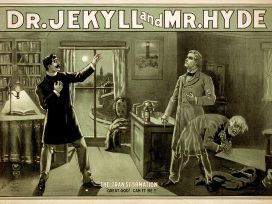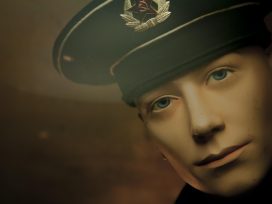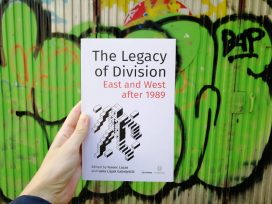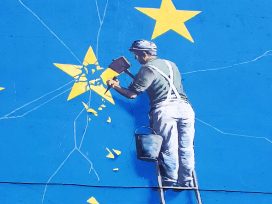I was born in Silesia, which has changed affiliations several times throughout its history. Silesia was part of Greater Moravia, Bohemia, Piast Duchy, the Holy Roman Empire, the Habsburg Monarchy, and Prussia. In Prussia, Silesia represented the eastern flank, but in Bohemia, the Holy Roman Empire, and the Habsburg Monarchy, it represented the north-western flank. At the Potsdam Conference in 1945, Silesia was given to Poland by Atlee, Truman and Stalin. From then on it was the western flank of the Soviet Empire, and seen from Madrid and Paris it belonged to the other, eastern part of Europe, guarded by Soviet tanks. The Cold War border between the eastern and the western camp was artificial, but it was firm and clear. The eastern camp was ruled by communists, and the western part was ruled by liberals from either centre-left or centre-right parties.
With the fall of the Berlin Wall, the unification of Germany, and the EU’s successive waves of enlargement, the East-West divide has lost its meaning. However, one should never underestimate the ignorance and arrogance of some journalists and politicians in attaching simple labels to places and people. A collection of these codes, brands and labels describe a world which is no longer there. They hinder our understanding of the complex and ever-changing reality, nourish unfounded biases, and facilitate political demagoguery.
Preordained community
Despite the fall of the Wall, eastern Europe continues to be part of a common narrative even though it is unclear where eastern Europe begins and where it ends. Nor is it clear whether citizens, cities and states identified as Eastern European have more in common than a short history of Soviet rule. The nature and duration of this Soviet legacy is also mysterious. Why are post-communists more neoliberal than the citizens and politicians in the western part of Europe? Is post-communism something worse than post-fascism? (Consider the Francoist legacy within the Popular Party in Spain). When does one cease to be post-communist?
I never was a member of the communist party, yet I am destined to die as a post-communist according to the East-West narrative. I have several Italian colleagues who were members of Partito Comunista, but they would not see themselves or their country as carrying the stigma of post-communism, which is attached to the eastern part of Europe.
Post-communism often implies economic backwardness, inefficient governance and lazy workers. While it is true that Eastern Europe represents the economic periphery of countries such as Germany, it is worth noting that over the past decade Poland’s economy has grown twice as quickly as Germany’s. The comparison between Poland and Greece is even more striking. While the economy of the latter contracted more than 20 per cent over the past decade, the former grew more than 20 per cent in the same period. This comparison also suggests that inefficient governance is a relative concept. Post-communist countries have been more vigilant in keeping their accounts in order than many of their western European partners. They have also used European funds more efficiently than some of the older EU member states. If post-communist workers are indeed so lousy and lazy, why are they in such demand across the western part of the continent?
Newspapers often use the term ‘Eastern Bloc’ even though most countries allegedly belonging to this Bloc are at odds with each other over history, commerce, borders and political aims. How Hungary can belong to the same bloc as Romania and Slovakia is a mystery to me. What does Bulgaria have in common with Latvia in terms of economic and political culture? So-called Eastern European countries do not even share the same eating and drinking habits, although pizza has recently emerged as the most popular dish in most of them.
Europe has always been a diversified polity. Some states were large, while others were small; some were rich and some poor; some were imperial and some peripheral. Each of these states had a period of glory and a period of disarray. Political alliances changed with different rulers and with different geopolitics and geo-economics. Experiences of war and foreign occupation have also been different. One of the longest and most bloody wars in Europe was between Catholics and Protestants. We still have Catholics and Protestants in Europe, but it is hard to imagine them going to war with each other again because of different religious views.
In the field of family politics, Poland has more in common with Italy or Spain than with post-communist Czech Republic. This is because the Czech Republic is the least Catholic country in Europe, while Italy, Poland and Spain are still relatively Catholic. (Only 21 per cent of Czechs now declare themselves to be Catholics, compared with 44 per cent in 1991.)
Nor is it easy to find common ground in Eastern Europe when it comes to respective foreign policies. Estonia, Latvia, Lithuania, Romania and Poland together with the United Kingdom and Germany belong to an anti-Putin ‘camp’, but important Hungarian, Austrian, Czech or Italian politicians declare themselves to be admirers of Putin.
In short, Europe is a complicated maze with many fault lines, not one single fault line, between the East and the West.
Addictive populists
Eastern Europe is often seen as the birthplace of populism. Viktor Orbán was the first to publicly declare his support for the notion of illiberal democracy in Europe, and Jarosław Kaczyński coined the term ‘counter-revolution’ to describe his efforts to get rid of the liberal legacy in post-communist Poland. These two politicians were also the first to challenge Angela Merkel’s generous policy towards refugees in 2015. This does not mean, however, that either Orbán or Kaczyński invented populism or pioneered the politics of hate towards migrants. Jean-Marie Le Pen was elected to the French Parliament in 1956 and to the European Parliament in 1984. Joerg Haider’s Freedom Party of Austria (FPÖ) entered a coalition government led by Wolfgang Schüssel in 2000, to the amazement and irritation of other European leaders. Pim Fortuyn List joined the Dutch coalition government after the 2002 elections, even though its anti-Muslim and anti-liberal leader had been assassinated during the electoral campaign.
It is also true that by the end of 2018 politicians widely labeled as populist controlled governments in only one western European state (Italy) and in seven states of Central and Eastern Europe (Hungary, Poland, the Czech Republic, Slovakia, Romania, Croatia and Bulgaria). This does not mean that the illiberal counter-revolution is a post-communist phenomenon. In Austria, the Netherlands, Denmark, Sweden and Finland anti-immigrant rightwing parties are very strong, and influence government policies in many formal and informal ways. (The FPÖ is back in the Austrian coalition government, for instance.) In France, the ‘populist’ candidate came second in the last presidential elections, defeating the leaders of all other established parties. In Great Britain, ‘populists’ were able to carry the day in the Brexit referendum and gained ground in both leading parties, Tories and Labour. Even in the prosperous and stable Germany the right-wing nationalist Alternative for Germany (AfD) entered the Bundestag in the 2017 elections with nearly a hundred seats.
Populism is a common feature throughout Europe, with local variations, of course. This is partly because of distinct if not bizarre political cultures across Europe: Viktor Orbán does not need to be as funny as Beppe Grillo in order to win votes. This is also because migration has not been spread evenly across the continent. This is also because the burdens of the last financial crisis have affected individual countries differently. Some of them even made money out of the crisis.
This last observation leads to the most significant fault-lines in today’s Europe. One fault line is between states exposed to refugee flows, chiefly because of their geographic location, and those with no similar pressures. Another fault line is between creditor states and debtor states in Europe. Yet another fault line exists between states governed by illiberal parties, and states where populists are still kept at bay. None of these fault lines have anything to do with the East-West divide. In 2015 Hungary was exposed to refugee flows, while Poland was not. The debtor-creditor drama is chiefly confined to members of the eurozone, and only some states from the ‘Eastern Bloc’ adopted the single European currency. While populist politicians are doing well in national elections in various post-communist countries, the three Baltic states belonging to the ‘Eastern Bloc’ are strangely immune to the charm of populism.
President Macron has become the favourite western European leader after he vowed to challenge the bad guys in Eastern Europe. Given the mounting populist pressure in his own backyard this is rather puzzling, not to mention Macron’s own populist tendencies.
Timeless stereotypes
Stereotypes are part of the symbolic politics of differentiating between friends and foes, good guys and bad guys, aristocrats and barbarians. There is always some truth to all stereotypes. In 1979, Walter Laqueur described France as a case of paranoia (complaints about oppression by the United States and Germany) afflicted by occasional fits of megalomania, over-aggressive, and defiant behaviour. Britain was for him a case of maladaptation to its surroundings, combined with the relatively rare symptom of claustrophobia, and the wish to insulate itself. Italy was a mixture of severe symptoms of various illnesses, including regression, restlessness, semi-purposive hyperactivity with handwringing, and an inability to sit or lie still, physical and emotional depletion, and fatigue. Some of these comments sound familiar four decades later, but they are too vague to be either correct or false. In any case, it would be wrong to design policies towards these countries based on these stereotypes.
The major problem with stereotypes is that they ignore historical change. Certain negative or positive characteristics come and go; they are never timeless. Hungary is now being described as a hotbed of xenophobia, but in the 1990s EU officials saw it as the only post-communist country worthy of EU membership. Poland is now being described as a hotbed of authoritarianism, but in the 1980s it was the key eastern European country able and willing to stand for liberty. Slovenia used to be part of the Balkan ‘hell’ of the 1990s and now it is seen as an oasis of stability in Mediterranean Europe.
In the media-saturated world, stereotypes contribute to the general confusion and represent a fertile ground for fake news and post-truth. Politicians should be held to account for their practical deeds, not for their alleged motivations. States are not by virtue good or bad; either they observe international laws or behave like predators. Democracy is not something that certain societies are suited to; democracy thrives when people demand liberty and put in place constitutions that regulate political bargaining. Even the most enlightened political leaders can turn autocratic if citizens care little about institutional checks and balances. All this applies equally to various corners of Europe – eastern and western, northern and southern. The Cold War wall no longer divides the continent. Let’s put the ghosts of communism to rest and try to build a united Europe.








